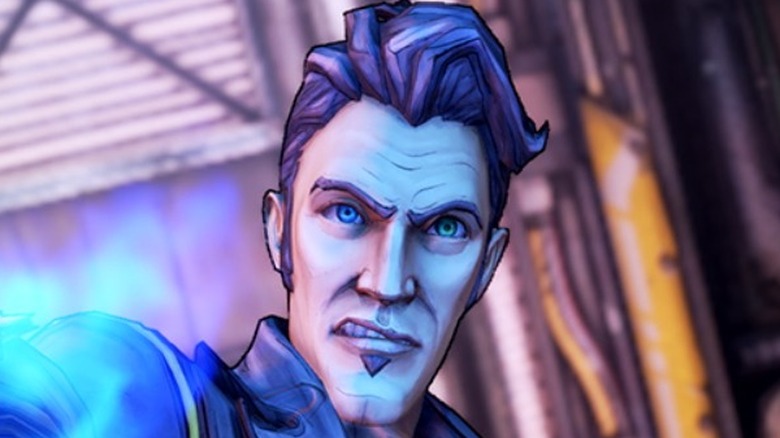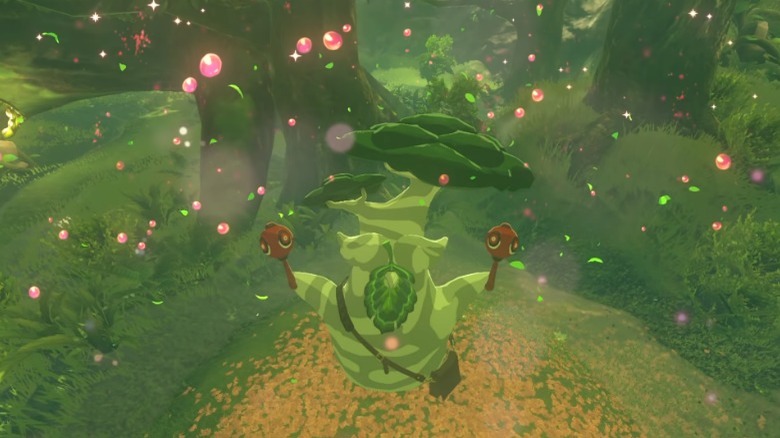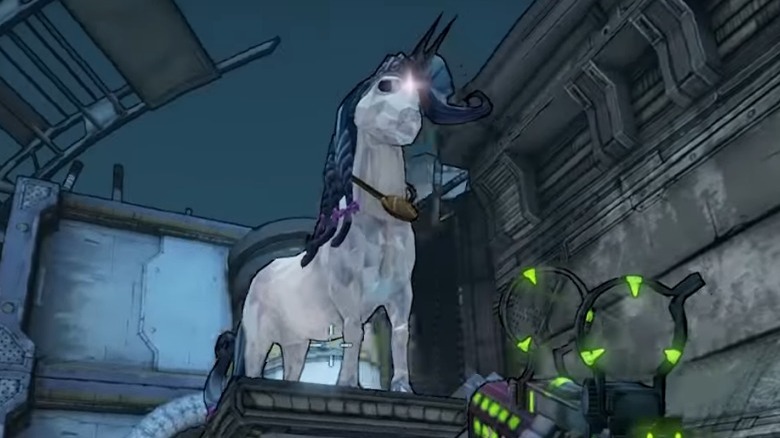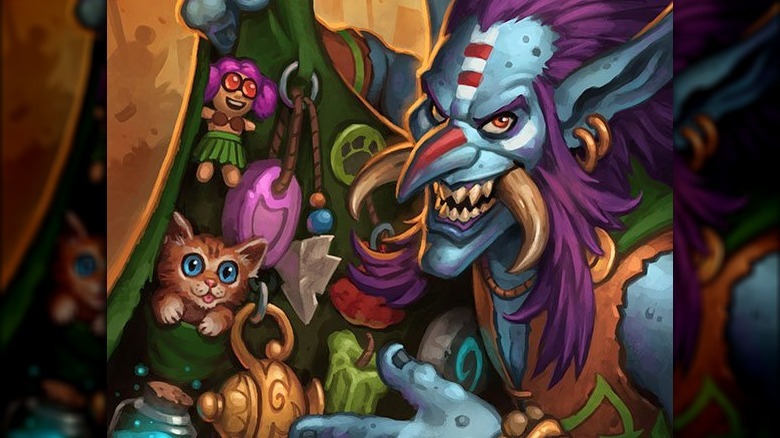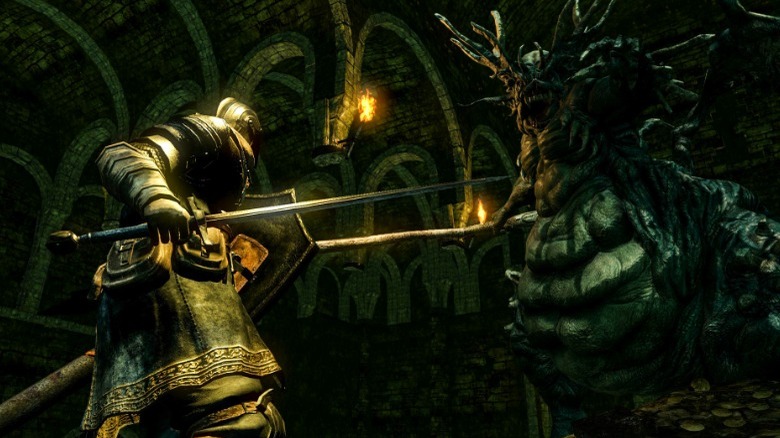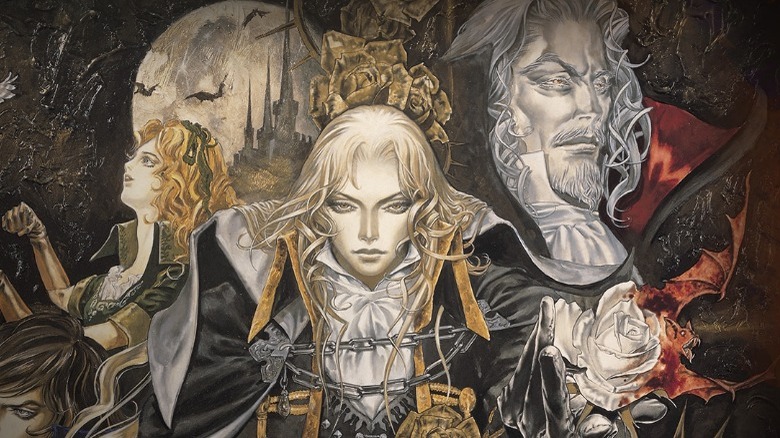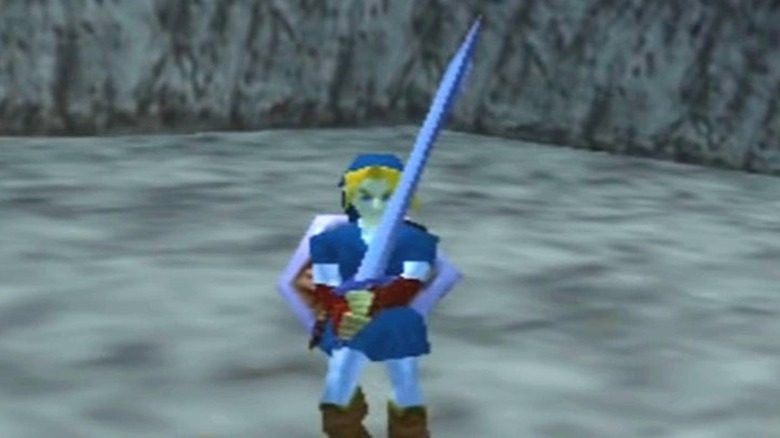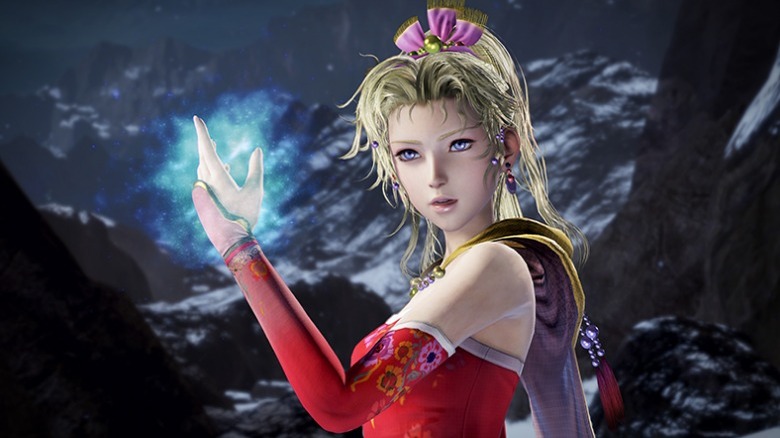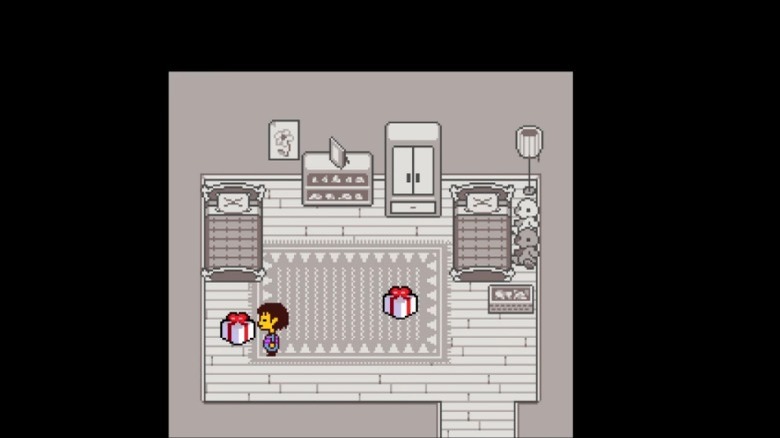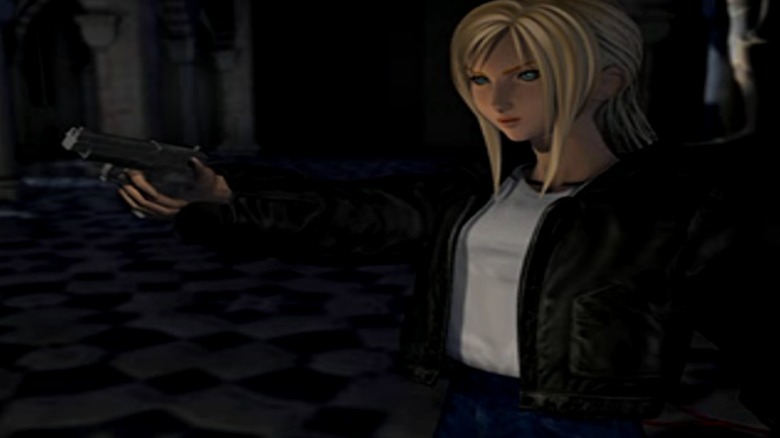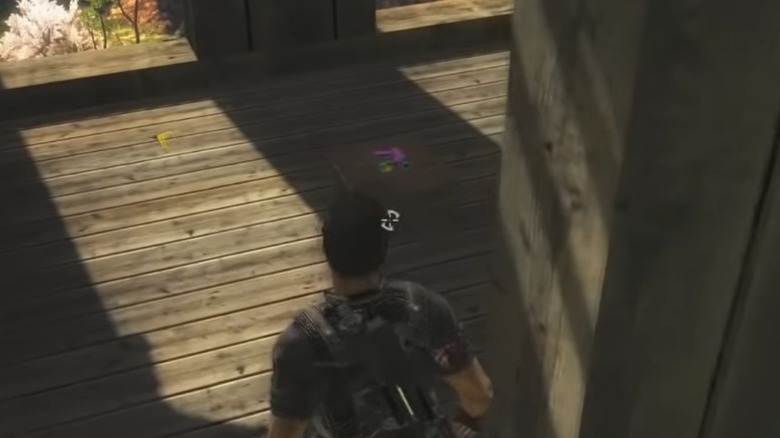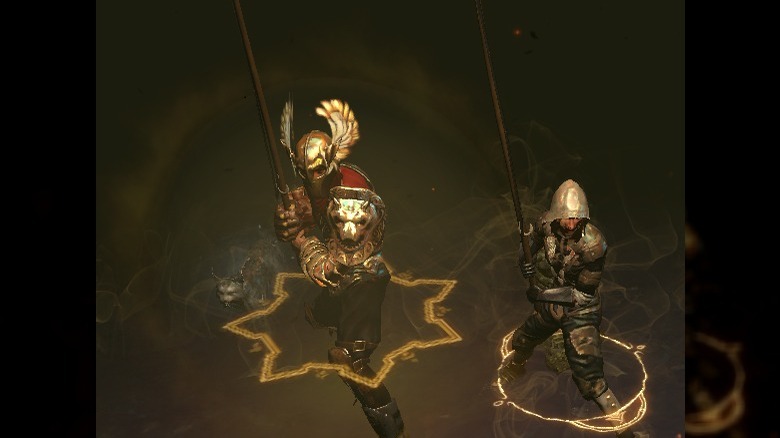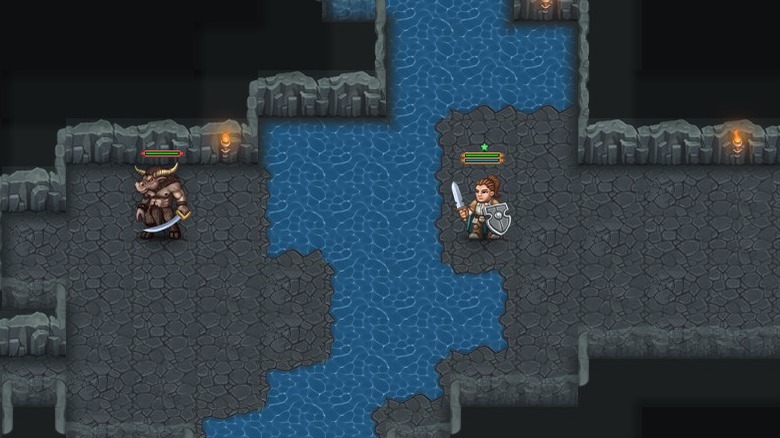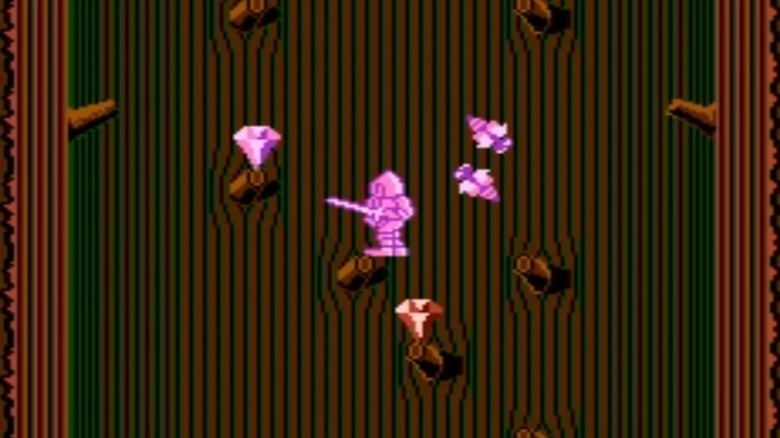In-Game Items That Were A Total Waste Of Time
Game developers are masters of data optimization. Studios have a ton of tricks to help them cram 20 hours worth of story and a game world the size of Los Angeles into 50GB of disc space. They can recycle audio assets, recolor NPCs, and most importantly, reduce the number of in-game items. If they aren't useful, then they're a waste of time and space, but sometimes that's the point.
Depending on the tone of the game, and the mischievousness of the developers, a useless item or three might be added to a program. Perhaps the item is part of a running gag developers like to play on their fans, or maybe the item is a beginner's trap designed to teach via baptism of fire. Either way, these items ultimately serve no mechanical purpose and are better off separated from gamers and their inventories.
Here is a small sampling of items to avoid in video games. However, if you can find a use for them not even the developers imagined, good on you.
Hestu's Gift - The Legend of Zelda: Breath of the Wild
"The Legend of Zelda: Breath of the Wild" rewrote the "Legend of Zelda" book. Instead of having infinitely deep pockets, Link can only carry a few weapons and shields at a time, and players need all they can find because everything in the game is frighteningly brittle. The more Korok Seeds players uncover, the more they can increase Link's storage capacity up to a point. Many gamers wondered what would happen if they found all the seeds in the game — a daunting task since there are 900 in total — but one player was up to the challenge. The reward was utter crap. Literally.
In 2017, reddit user xFateAwaitsx scoured Hyrule, pocketed every seed, and then reported back to Hestu for their grand reward. Instead of something like, say, infinite weapon durability (which would have diminished the need to collect weapons but been nice regardless) Hestu bestowed upon them ... a golden poop. The item has no mechanical impact on the game whatsoever, and we know it's poop because it "smells pretty bad."
For the time it took to find all 900 seeds, Hestu's Gift is not even worth the bragging rights. According to the game's director, Hidemaro Fujibayashi, this fecal reward for completionists was chosen because his team "thought it would be funny to make that a big joke" (via IGN).
The gift might have been made for a gag, but given the arduous tasks needed to find it, the developers are the only ones laughing. Only lorehounds get any real use out of Hestu's Gift, but does anyone really need confirmation that Korok Seeds were poop all along?
Mysterious Amulet - Borderlands 2
The "Borderlands" story rests on two pillars: guns and comedy — kinda obvious when one of the series' most famous quest givers tasks players with shooting him in the face. Each entry uses an RNG system to produce a never-ending tide of equipment, and while some items are underpowered due to luck, others are intentionally bad for the sake of a joke. Weapons like the Bane and Captain Blade's Midnight Star are infamously useless, but one piece of equipment is even more pointless than a grenade that bounces back at players.
In the "Tiny Tina's Assault on Dragon Keep" DLC, players might encounter Mr. Miz. His sole quest, The Amulet, asks you to either purchase the Mysterious Amulet from him or punch him in the face. Buying and equipping the item increases the vague Friendship stat, which only makes a character's boots sparkle with pixie dust, and only if they wear it while paired with other amulet users. The effect is as cosmetic as it is pointless.
Knowing the amulet's frivolity, you might be tempted to punch Mr. Miz in the face — Brick certainly wants to. However, the item became semi-useful thanks to the surprise final "Borderlands 2" DLC, "Commander Lilith & The Fight for Sanctuary." In the expansion, Handsome Jack's bedazzled unicorn Butt Stallion will puke up a random weapon whenever players give it Eridium. If players force feed Butt Stallion the alien currency while wearing the Mysterious Amulet, she will cough up Unicornsplosion, a glowing shotgun that shoots out mini-Butt Stallions that explode in a rainbow of destruction.
Without the final DLC, though, the Mysterious Amulet is completely pointless. Unless you like kicking up pink sparkles.
Almost everything sold by Griftah - World of Warcraft
Video game logic dictates that every playable character in MMORPGs know certain skills. The ability to swim like a shark, heal grievous injuries with home-cooked meals, and jump like an Olympic athlete are standard from level one. Leave it to a game like "World of Warcraft" to turn this trope into an NPC who is in on the joke.
Players who wander locations such as Shattrath, Dalaran, and Dazar'alor can find the shady businesstroll Griftah. For those not caught up on early 1900s lingo, a "grifter" is another word for a con-artist or swindler, and much like old comic villains whose names described their criminal modus operandi, Griftah is a snake oil salesman and proud of it.
Virtually every piece of Griftah's wares is expensive and completely worthless. The Marvelous Madstone of Immortality? Players can already come back to life after death. The Stone of Stupendous Springing Strides? The game already has a dedicated jump button. The Infallible Tikbalang Ward? Tikbalangs don't exist in "World of Warcraft," so how could anyone prove the wards actually work?
The only exceptions are the Talisman of True Treasure Tracking and Hula Girl Doll, which are needed to obtain the Hivemind and Turbo-Charged Flying Machine mounts. Then again, players can't build the flying machine without the Engineering profession, so the doll is still a waste of time to blacksmiths and tailors.
Pendant - Dark Souls
The "Dark Souls" franchise is a masterclass in game design and tearing apart communities over game difficulty discourse. Each entry is soul-crushingly challenging but only because enemies hit players like a runaway train. The series is tough but not unfair since there's no such thing as a beginner's trap ... save one glaring exception.
Whenever players create a new character in "Dark Souls," they can pick from a small selection of starting gifts. Some are limited consumables that help ease players into the difficulty, while others are permanent items that can give users early access to certain areas. And then there's the infamous Pendant. The item's description says it has "no effect," but gamers were convinced that the Pendant had a clandestine use, especially when the game's director, Hidetaka Miyazaki, once told Famitsu that he'd either pick the Pendant or no starting gift when playing — and because the Old Witch's Ring has a similar description and lets players understand Quelaag's Sister. Well, that was all part of a joke.
During a 2012 interview with IGN, Miyazaki came clean: "When it comes to the pendant, I actually had a little bit of an intention to play a prank." In Miyazaki's own words, the gift is designed to be useless. Sure, players can trade it to Snuggly for a Souvenir of Reprisal, but that's equally useless unless they join the Blade of the Darkmoon Covenant.
That's a good prank, Miyazaki.
Belt of Free Action and Free Action spell - The Elder Scrolls 3: Morrowind
"The Elder Scrolls 3: Morrowind" has some of the most annoying features in any "Elder Scrolls" title. Gamers shriek in terror whenever they hear the shrill cry of the Cliff Racer, and tell horror stories of being afflicted with paralysis. Bethesda tried building in safety measures to help players get rid of paralysis, but the developers instead created a debuff deadlock.
When a player is paralyzed in "Morrowind," they can't move or attack; they can only either wait five seconds for the debuff to disappear or try to cure it. Drinking a Potion of Cure Paralyzation or eating a Corkbulb Root are good options, but the game also includes the seemingly superior Free Action spell and Belt of Free Action. Why waste a potion or ingredient when you can just negate paralysis with a wave of your hand? Because you can't wave your hand while paralyzed, that's why.
Thanks to paralysis, players who have Free Action or the Belt of Free Action are stuck at an impasse. They could use the spell or item to cure their paralysis, but paralysis prevents them from using spells and item effects. This conundrum renders the spell and equipment moot and a waste of time. Then again, if a player doesn't have the appropriate potion or a Corkbulb Root, time is all they have when paralyzed.
Given the number of enemies that can use paralysis, you might be tempted to invest in the Free Action spell or the Belt of Free Action, but since paralysis negates their effects, you are better off spending that money stocking up on Corkbulb Roots.
Red Rust and Tyrfing - Castlevania: Symphony of the Night
"Castlevania: Symphony of the Night" turned the "Castlevania" series on its head. In just one title, the franchise went from a semi-linear platformer to an adventure experience with a focus on exploration and collecting items. While some equipment, such as the Crissaegrim, became powerful series staples, others, like the Secret Boots were one-off, borderline useless gimmicks — assuming you don't like the novelty of stretching Alucard's sprite. However, two items in "Symphony of the Night" go beyond useless and barrel straight into detrimental.
Throughout "Symphony of the Night," Alucard can collect an armory's worth of weapons — including a Sword Familiar that should be, um, familiar to fans of the "Castlevania" animated series. Most of these items provide tangible benefits. Red Rust and Tyrfing dare to be different.
Red Rust is, as its name suggests, a rusty weapon that is so dull it actively makes Alucard weaker by two points. If that sounds useless already, Red Rust isn't done yet. The weapon is also very slow and occasionally refuses to come out of its sheath, effectively jamming and failing to attack. But, as bad as Red Rust is, Tyrfing ups the ante. While that weapon goads users with its dual Dark/Cut damage typing, it dulls any usefulness into oblivion with a -30 attack penalty. If Alucard's attack stat falls to zero (or worse, becomes negative) while wielding Tyrfing, the weapon passes harmlessly through enemies.
Red Rust and Tyrfing should only be collected by completionists with the unstoppable itch to hoard every item in the game.
Giant's Knife - The Legend of Zelda: Ocarina of Time
"The Legend of Zelda" is the quintessential adventure series. The franchise virtually perfected the art of item-based puzzles. Almost every pickup and piece of equipment in every game is used at least once, but there's one outlier.
When Medigoron's shop is opened by Child Link in "The Legend of Zelda: Ocarina of Time," he promises players he's working on something great but needs some time. So, gamers return several in-game years later as Adult Link. That's long enough for Medigoron to finish his masterpiece: the Giant's Knife. For only 200 Rupees, you can purchase this massive, two-handed sword ... that breaks after eight swings. What kind of shoddy blacksmith is Medigoron when tree branches in "The Legend of Zelda: Breath of the Wild" are more dependable than his offerings?
Not only is the Giant's Knife a complete waste of time given its lack of durability, it is also a waste of money since it doesn't come with a refund policy. Once you break the sword, it can't be repaired, just replaced for another 200 Rupees. And, once again, 200 Rupees only buys players another eight sword swings. Luckily, anyone who takes the time to complete the trading quest in "Ocarina of Time" is rewarded with Biggoron's Sword, an infinitely more durable weapon crafted by Medigoron's big brother, Biggoron.
Shields, eyedrops, and goggles - Final Fantasy 6 (original version only)
You'd be surprised how easily a developer can derail a game. A mistyped line can neutralize various mechanics, such as a stat that was supposed to influence the odds of dodging attacks. When that happens, the game experience breaks down. Oh, and items that tie into the stat are made pointless.
When "Final Fantasy 6" released on the SNES (and was known as "Final Fantasy 3"), the game shipped with a bug that eroded the Evade stat's viability. Instead of determining the odds of dodging physical attacks, the odds of sidestepping danger were tied to the Magic Evasion stat. But, the studio didn't realize this in time and linked items such as shields to the vanilla Evade stat, which made equipping them a waste of time.
Moreover, the Evade stat was also tied to status effects such as Blind. What should have been a serious debuff that decreased a character's chances of hitting targets turned into a non-issue. And, with the severity of Blind diminished into nothingness, items that cured or prevented Blind, such as eye drops and Goggles, were rendered null.
While Square Enix eventually realized this mistake, it was too late for the original retail versions — the glitch and its negative impact on shields and eye drops wasn't fixed until Square started porting the title. If you play "Final Fantasy 6" on anything younger than a Game Boy Advance, the Evade stat works as intended, as do shields and eye drops.
Real Knife and The Locket - Undertale
Most video games reward players who knuckle down and overcome extreme odds. These prizes tend to come in the form of super-powerful weapons and armor that make the final boss a cakewalk. "Undertale" is not most games. While it can force players to go through an unconventional ringer, a shiny prize waits at the end. But you know what they say: Not all that glitters is gold.
Players who swallow their pride (and morality) and complete the gut-wrenching "Undertale" Genocide run will eventually find the Real Knife and The Locket. These are the two strongest items in the game, maxing out attack and defense for the protagonist (or antagonist, depending how you look at it). Since players obtain these items right before the Genocide run's final boss, Sans, it's only natural to assume they will help in the upcoming fight. They don't.
If you use Check on Sans during his fight, you will find he has probably the worst stats of all time. Staying true to his lazy nature, his HP, attack, and defense stats are all 1, so not only does he deal a pathetic 1 damage per attack, he also dies in one hit (which is easier said than done since he likes to dodge attacks and use cheap tactics). In other words, the Real Knife and The Locket offer no tangible advantages during the only fight where you can use them.
Leave it to Sans to pull one final prank before players kill him.
Good Luck Charms - Parasite Eve
Square Enix might be the king of the turn-based RPG, but the company isn't a one-trick pony. As a publisher, Square has bankrolled looter shooters like "Outriders" and adventure titles such as "Tomb Raider," but as a developer, Square prefers to stick to its RPG guns — with the occasional new genre added to the mix. In 1998, Square (back when it was SquareSoft) spliced together RPG mechanics with survival horror to create "Parasite Eve." The game has far more items than normal survival horror titles, but not all of them serve a purpose.
Any RPG worth its salt has side characters, and in "Parasite Eve," Kunihiko Maeda fulfills one of those roles. As a scientist, not only is he equipped to spout exposition, he also produces special MacGuffin bullets designed to kill the final boss. Additionally, he gives players several good luck charms throughout the game. What do they do? Nobody knows or can agree.
Some players believe the charms function exactly as they sound and give players good luck, i.e., make it easier to find rare items. But, the general consensus on Reddit is that the charms are just inventory stuffers that at most give Maeda a bit more personality. Since the game's code is anything but straightforward, nobody can say for certain if the good luck charms actually have any mechanical function, so we'll just agree with the majority here and say that Maeda's charms are (probably) a waste of time.
Happy Bubble Blaster - Just Cause 2
In "Metal Gear Solid 5," players can use a Water Pistol. While the child's toy might seem out of place in the game's collection of military equipment and robotic fists, this squirt gun is surprisingly effective at short-circuiting electrical pieces and stunning enemies. Without Hideo Kojima at the helm, the Water Pistol would have likely been a gag weapon, not unlike the Happy Bubble Blaster in "Just Cause 2."
If you comb all 1,035 square kilometers of "Just Cause 2," you will eventually come across a random desert tower in the middle of nowhere. At the top of the tower rests a pink toy pistol known as the Happy Bubble Blaster. Since the weapon is hidden in a secret location, video game logic would dictate it's a super powerful item. Maybe the bubble gun encases enemies in bulletproof orbs? If only.
When you fire the Happy Bubble Blaster, it shoots harmless soap bubbles. Funnily enough, if you point this dollar store plaything at NPCs, they react as though it were a real gun; civilians flee for their lives and local guards attack the player. You can't even blow up generators with the "weapon."
Unless you feel like messing around with NPCs or starting a firefight without a real firearm, the Happy Bubble Blaster is completely useless. Perhaps the "Just Cause 2" antagonist hid the weapon in the tower because he knew everyone in his country is allergic to fun.
Fishing Equipment - Path of Exile
Dungeon crawlers live and die on a constant stream of loot. Many gamers love the rush of adrenaline and dopamine when they kill a boss (or random goblin) and get a Staff of +5 Earthquakes. Thanks to loot tables, virtually any item can drop from any enemy, and developers occasionally insert joke items, either to pave the way for a bigger joke or to be sold off for cash. But sometimes, these items tease players with practicality when they are actually a total waste of time.
"Path of Exile" features a fairly open-ended weapon system. Any class can equip any weapon, but the game subtly guides players with various buffs — for instance, an axe that increases physical damage is more suited to melee classes than magic classes. One weapon type, the fishing rod, sports pathetic damage output but provides huge boons for anyone who goes fishing. With the right rod, players can catch some pretty rare fish, especially if they pair it with rings and talismans that feature symbiotic buffs. It's a shame the game doesn't have any dedicated fishing spots.
In reality, fishing is a running gag throughout "Path of Exile." No such skill exists, and yet the developers at Grinding Gear Games keep inserting new pieces of equipment that provide these worthless angling buffs. The studio shows no sign of stopping, and odds are they will bait "Path of Exile 2" with the same worthless items. Or will the devs actually add fishing and turn the joke into reality?
Scroll of Literacy Check - Ancient Domains of Mystery
Stats are crucial in any RPG and determine what a player can and can't do. Depending on the intended experience, a game might cut down on attributes to streamline gameplay or throw players into the deep end and inundate them with more stats than they will ever use. The classic roguelike, "Ancient Domains of Mystery," is a prime example, as it utilizes a ton of skills you don't see in other games. Literacy might be the most important since it affects the ability to read spellbooks and unidentified scrolls. One of these scrolls is as unidentified as it is pointless.
When players pick up a Scroll of Literacy Check, they will have trouble reading it if their Literacy skill is below 90. The scroll teases a hidden message, and once players finally reach the prerequisite skill level, the parchment reveals the following: If you can read this, you must be pretty good. That's it. The scroll just tells players what they already know, which is as useless as it sounds.
Of course, players who are displeased with the Scroll of Literacy Check can always make their own purpose with it. In a pinch, players can convert the item into a blank scroll, and the combat-minded can slap enemies across the face or throw the scroll at them for a total of 1 damage, which is still more useful than telling players they're literate.
Cloak of Darkness - Wizards & Warriors
When NES games were produced, developers still had an arcade cabinet mindset. Most titles provided power ups designed to make gameplay easier, usually by giving players projectiles or an extra hitpoint. Every now and then, developers snuck in items that punished players, but they were usually easily distinguished from the beneficial items. Something is very wrong when these two kinds of pickups get mixed up.
"Wizards & Warriors" was the second title developed by Rare for the NES. The game is your standard sword and sorcery adventure that tries to inch players into the experience with unlimited continues and collectible power ups. One such item, the Cloak of Darkness, is an invisibility cloak seemingly designed to help the protagonist sneak past enemies and render him invincible. After all, you can't hit what you can't see. However, reality got in the way and made the cloak worse than useless.
Instead of making the protagonist invisible to enemies, the Cloak of Darkness makes him invisible to players (via Defunct Games). Not only can monsters still see and attack him with pinpoint accuracy, but the item makes the world of "Wizards & Warriors" a nightmare to navigate. If players can't see their character, how are they expected to land any of the game's jumps?

